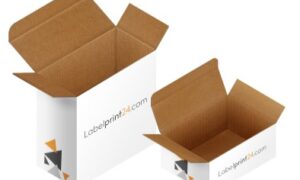In recent years, the packaging industry has faced growing scrutiny over its environmental impact, with a particular focus on the sustainability of packaging materials. Amid this scrutiny, polyurethane foam has emerged as a leading eco-friendly and efficient packaging solution. Once criticized for its environmental footprint, this material is now at the forefront of innovative approaches to reducing waste and enhancing recyclability.
The Case for Foam Packing
The argument for using foam packing in sustainable packaging strategies is strong. Foam’s versatility and protective qualities make it indispensable in various applications, from consumer electronics to delicate artworks. Moreover, its recycling and reuse ability aligns with the growing demand for sustainable packaging solutions. By reducing pack sizes and emissions through efficient design and material use, foam packing addresses environmental concerns and offers practical benefits to businesses and consumers alike.
Reducing Environmental Impact
Foam packing’s role in minimizing environmental impact extends beyond its recyclability. Its high performance in protecting goods significantly reduces the likelihood of damage during transit, thereby decreasing the potential for waste. Additionally, the efficiency of foam in packaging design allows for more compact and lighter shipments, leading to lower carbon emissions from transport. These environmental benefits underscore the importance of foam packing in the pursuit of sustainable packaging solutions.
Encouraging Reuse and Recycling
The emphasis on reusing and recycling foam is a critical component of its eco-friendly profile. Innovations in foam technology have led to the development of products that can be easily recycled or repurposed, further reducing the need for new materials and contributing to a circular economy. By promoting the reuse of foam, the industry conserves resources and inspires a shift towards more sustainable consumption patterns.
A Shift Towards Sustainability
The journey toward sustainable packaging has led to significant advancements in polyurethane foam technology. Manufacturers have adopted greener production processes, minimizing energy consumption and eliminating the release of harmful gases. This shift is part of a larger industry-wide effort to mitigate the environmental impacts associated with packaging materials. Unlike traditional materials that contribute to landfill overflow and pollution, polyurethane foam is being developed with a keen focus on eco-friendliness and efficiency.
The Clean Manufacturing Process
The manufacturing process of polyurethane foam sets it apart as an environmentally friendly option. The production of polyurethane foam does not emit combustible gases, making it a cleaner choice compared to other materials. Furthermore, the energy required for foam production is the primary environmental consideration, prompting manufacturers to adopt more sustainable practices. This commitment to eco-friendly manufacturing is a testament to the industry’s capability to adapt and innovate in response to environmental concerns.
Repurposing and Recycling
One of the most compelling aspects of polyurethane foam is its potential for repurposing and recycling. The industry has made strides in ensuring that offcuts and scrap foam are not wasted but instead granulated and repurposed for products like carpet underlay. Additionally, non-granulated scrap, previously destined for landfills, is now utilized in energy generation, embodying a zero-waste philosophy that significantly reduces the environmental footprint of foam packaging.
Looking Ahead: The Future of Sustainable Foam
The future of sustainable foam packaging is bright, with ongoing research and development focused on enhancing its environmental performance. Efforts to improve recyclability, reduce production impacts, and develop alternative materials that are even more eco-friendly are paving the way for a new era of sustainable packaging solutions. As the industry continues to evolve, foam packing remains a key player in the quest for environmentally sound packaging options.
Innovations in Foam Technology
Emerging technologies in foam production are aimed at reducing the environmental impact even further. From incorporating bio-based materials to developing foam that can be easily decomposed or recycled, these innovations represent a significant leap forward in sustainable packaging. By focusing on the entire lifecycle of foam products, the industry is working towards solutions that are not only efficient and effective but also kind to the planet.
Engaging with Stakeholders
The path to sustainable foam packaging involves collaboration among manufacturers, consumers, and environmental organizations. By engaging with stakeholders, the industry can better understand the needs and concerns related to foam packaging and work towards solutions that benefit everyone. This collaborative approach is essential in driving the adoption of sustainable practices and ensuring that foam packaging continues to play a vital role in protecting both products and the planet.
Embracing the Circular Economy with Foam Packaging
As the world shifts towards a more sustainable future, the role of foam packaging in the circular economy becomes increasingly crucial. This concept revolves around minimizing waste and making the most of resources, a principle that foam packaging aligns with through its lifecycle from production to disposal or reuse.
Enhancing Lifecycle Sustainability
Foam packaging plays a pivotal role in enhancing lifecycle sustainability by extending the useful life of products through superior protection and reducing the need for excessive packaging materials. Moreover, its lightweight nature contributes to lower transportation emissions, highlighting foam’s contribution to a more sustainable supply chain. By designing foam packaging with the circular economy in mind, manufacturers can ensure that products are not only protected but also contribute to a reduction in the overall environmental impact.
Closing the Loop on Foam Waste
The challenge of foam waste is met with innovative recycling programs and waste management practices aimed at closing the loop. Efforts to streamline the collection and recycling of foam packaging are essential in transforming waste into valuable resources. This involves improving recycling infrastructure and educating consumers and businesses about the importance of recycling foam. Through these initiatives, foam packaging can be repurposed into new products, demonstrating a practical application of circular economy principles and reducing the reliance on virgin materials.
By integrating foam packaging into the circular economy, the industry sets a precedent for sustainable practices that other sectors can follow. The focus on enhancing lifecycle sustainability and closing the loop on foam waste exemplifies a commitment to environmental stewardship and innovation. As we move forward, the continued evolution of foam packaging will play a key role in achieving a more sustainable and efficient global packaging system.
Conclusion
The rise of polyurethane foam in sustainable packaging marks a significant shift in how the industry addresses environmental concerns. Through innovative manufacturing processes, a commitment to recycling and repurposing, and the continuous development of eco-friendly materials, foam packing has established itself as a key component of sustainable packaging solutions. As we look to the future, the role of foam packing in minimizing environmental impact and supporting a circular economy is undeniable. With each advancement, the packaging industry moves closer to achieving its goal of complete sustainability, proving that eco-friendly and efficient packaging is not only possible but also practical and beneficial for all.



































